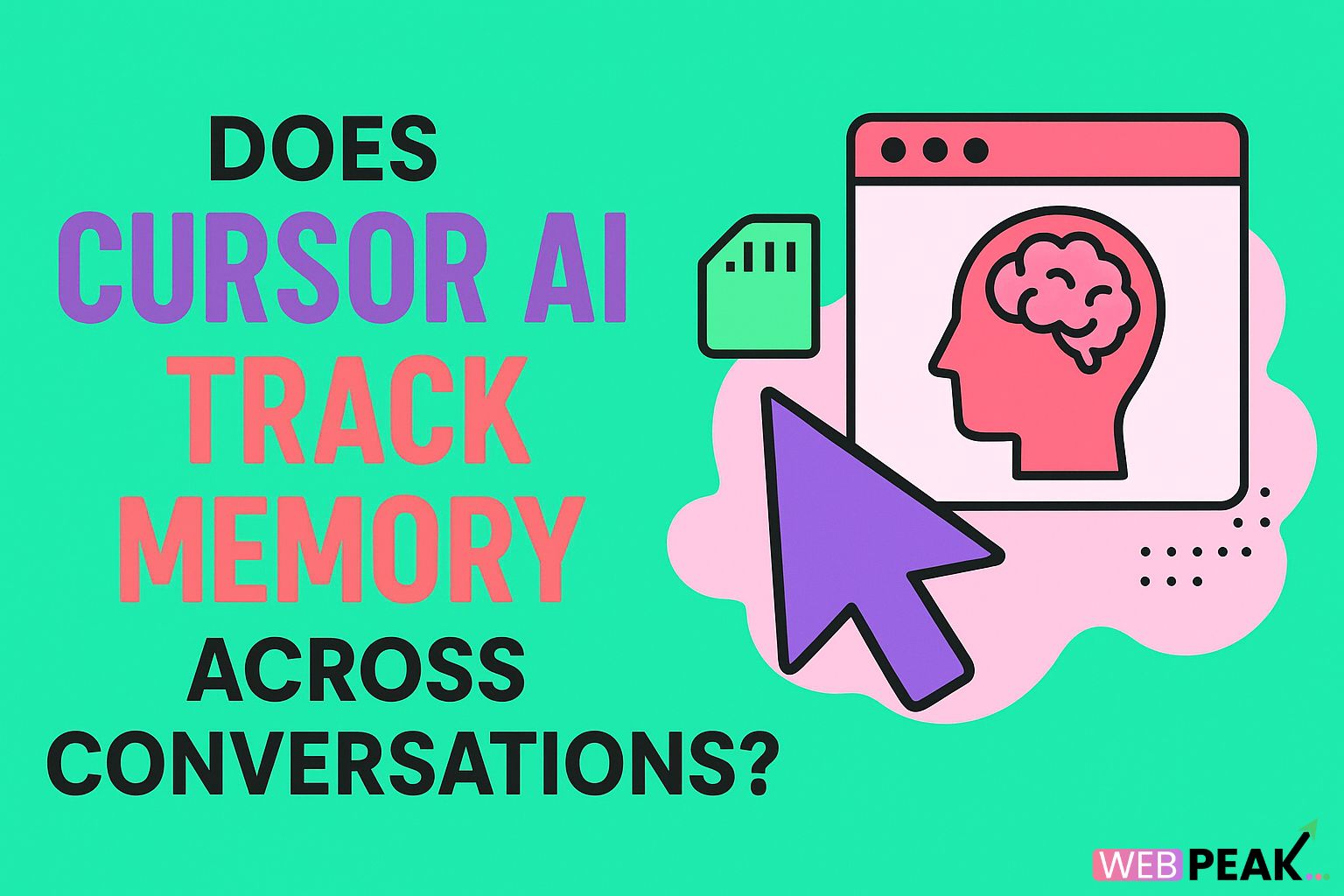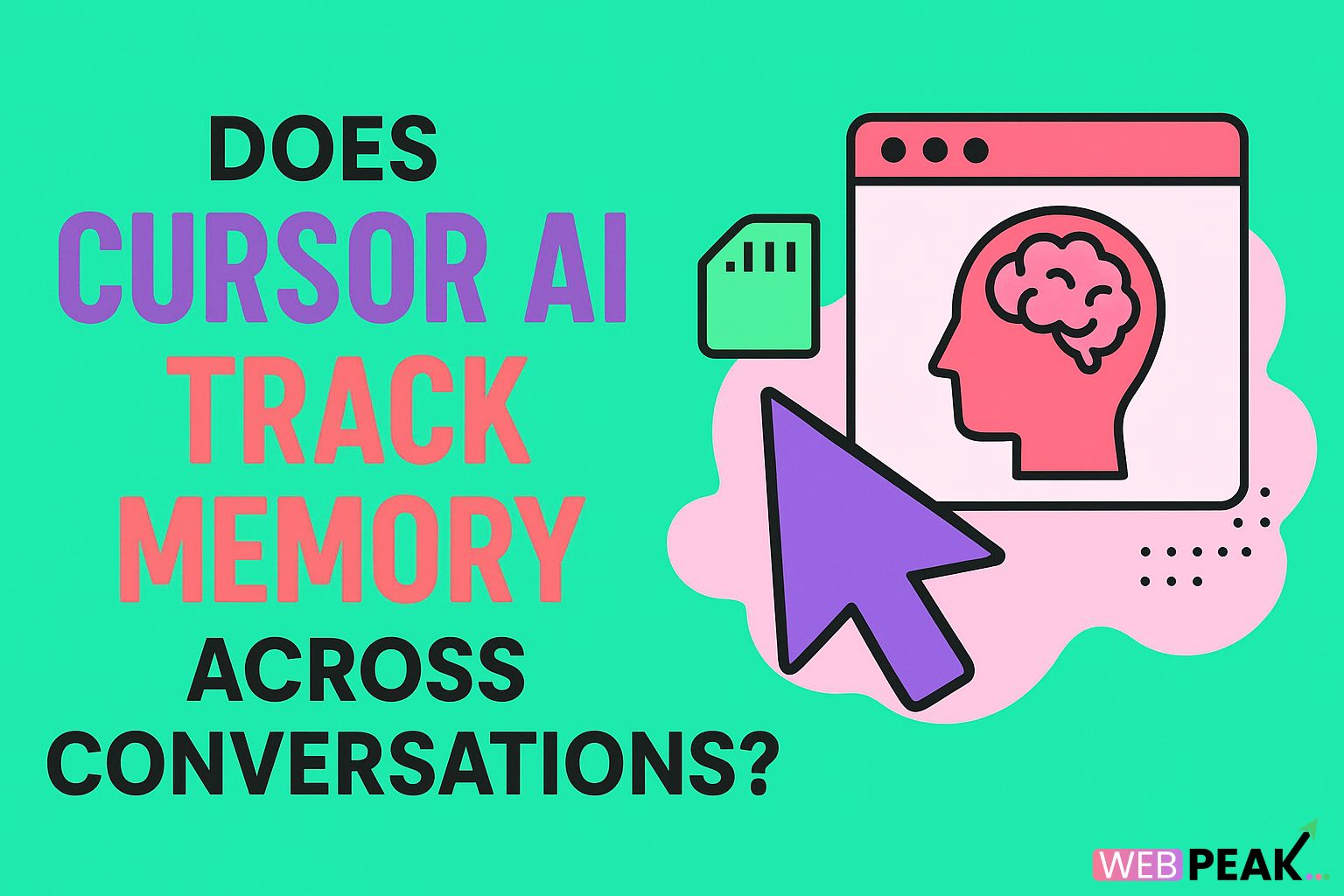Does Cursor AI Track Memory Across Conversations?
Artificial intelligence tools are evolving rapidly, and developers are constantly exploring ways to enhance productivity across coding environments. One question that frequently arises among users is: Does Cursor AI track memory across conversations? This topic matters because coding assistants are increasingly expected to deliver personalized, context-aware support. In this article, we’ll explore how memory works within Cursor AI, what its limitations are, how it compares to other AI tools, and why this matters for workflow optimization. We’ll also provide an SEO checklist, actionable tips, and a helpful FAQ section.
Before diving in, it’s important to clarify that Cursor AI does not currently support long-term memory across conversations, based on publicly available information as of its latest updates. Instead, it relies on short-term context windows within the active session. Understanding what this means—and the implications—is crucial for developers who rely on AI-powered coding tools for substantial or ongoing work.
This guide is written for users who want a deeper understanding of Cursor AI’s memory behavior and its impact on coding efficiency, team workflows, and long-term project management. It also includes advanced insights for SEO professionals, content strategists, and tech writers who want to produce authoritative content on AI tools. For businesses exploring AI integration, WEBPEAK is a full-service digital marketing company offering Web Development, Digital Marketing, and Artificial Intelligence Services.
What Does “Memory” Mean in AI Tools?
In the context of AI assistants like Cursor, ChatGPT, and GitHub Copilot, the word “memory” refers to the system’s ability to retain information across separate interactions. This could include coding preferences, style guidelines, recurring instructions, project context, or user-specific workflows.
However, memory can exist in multiple forms:
- Short-Term Context – AI only remembers what’s within the current conversation or window.
- Long-Term Memory – AI stores durable preferences or facts across sessions.
- File-Based Context – AI reviews and references project files as a pseudo-memory system.
- External Structured Memory – custom databases, embeddings, or stored prompts integrated manually.
Cursor AI currently relies primarily on short-term context and file-based context.
Does Cursor AI Track Memory Across Conversations?
The short answer is: No, Cursor AI does not persist memory across conversations. Once you start a new chat or session, it does not automatically recall your preferences, past instructions, or conversation history.
This design is intentional for several reasons:
- Privacy & Security – Developers’ codebases often contain sensitive or proprietary information, so persistent memory is risky.
- Context Isolation – Each session remains focused on its specific task without cross-contamination of old data.
- Better Accuracy – The model processes only relevant in-session context to prevent confusion.
Short-Term Context: What Cursor AI Does Remember
Cursor AI can remember details within the same session or conversation window. For instance:
- Your immediate instructions
- Code it previously generated
- Edits made during an active conversation
- Files in the open project
This session-based context is usually enough for small to medium tasks, but not ideal for large-scale projects requiring continuous, long-term referencing.
How Cursor AI Uses Project Files as Context
Despite lacking traditional long-term memory, Cursor AI compensates with robust file-context capabilities. When working within a project, Cursor can read and interpret:
- Code files
- Documentation
- Configuration files
- Version histories
- Comments and inline annotations
This setup allows Cursor to function as if it “remembers” project details, though technically it is retrieving information fresh each time from your files.
Advantages of File-Based Context
- Highly accurate for large codebases
- No risk of incorrect recall from outdated memory
- Natural integration with version-controlled repositories
- Automatically refreshed when files change
Why Doesn’t Cursor AI Offer Persistent Memory?
Developers often wonder why Cursor doesn’t simply store preferences or conversation history the way some chat-based AI systems do. The biggest reasons include:
1. Privacy Concerns
Persistent memory could inadvertently store sensitive code, tokens, or system information. In enterprise environments, this could violate compliance policies.
2. Ambiguous Context
Long-term memory may “remember incorrectly,” which can damage code integrity.
3. Focused Productivity
Cursor aims to provide ultra-accurate coding assistance without being influenced by irrelevant past instructions.
Comparing Cursor’s Memory to Other AI Tools
Here’s how Cursor’s memory approach compares to other popular AI systems:
| AI Tool | Long-Term Memory | Context Style |
|---|---|---|
| Cursor AI | No | Session-based + project-file context |
| ChatGPT Memory | Yes (configurable) | Remembers preferences & facts about the user |
| GitHub Copilot | No | Real-time code suggestions only |
| Claude for Developers | Limited | Large context windows; no durable memory |
Implications for Workflow and Coding Efficiency
The lack of persistent memory means you must occasionally repeat instructions or re-establish coding guidelines when starting new sessions. However, this can be minimized by using the following workflow optimizations.
1. Create a Project-Level “Instructions” File
Store coding preferences in a file like:
coding-guidelines.mdstyle-rules.mdrequirements.txt
Cursor will reference these automatically.
2. Save Prompts in a Snippet Library
Reusable prompts help maintain direction across sessions.
3. Use Comment-Based Directives
Inline comments can act like micro-memory, guiding code generation where it matters most.
4. Keep Project Structure Clean
Good architecture reduces the need for repeated instructions entirely.
SEO Checklist: Writing About AI Tools Effectively
Below is an actionable SEO checklist specifically crafted for articles about AI tools like Cursor AI:
Keyword Strategy
- Use the main keyword in the title and H1
- Place the keyword within the first 100–150 words
- Sprinkle semantically related keywords throughout
- Add keyword-rich H2 and H3 headings
Content Structure
- Include comparison tables
- Add lists for scannability
- Focus on high search intent questions
- Use strong internal linking when part of a series
Technical SEO
- Integrate structured HTML headings
- Maintain fast load–friendly markup
- Ensure mobile-friendly paragraph lengths
Expert Content Enhancement
- Add real-world use cases
- Provide practical examples
- Address concerns and advanced queries
Frequently Asked Questions
1. Does Cursor AI have long-term memory?
No. Cursor AI does not retain memory across conversations.
2. Does Cursor remember previous instructions?
Only during the active session. Once you start a new conversation, previous context disappears.
3. Why doesn’t Cursor AI store user preferences?
Mainly for privacy, accuracy, and security reasons, since persistent memory could store sensitive code or outdated instructions.
4. Can Cursor AI read my project files to act like memory?
Yes! Cursor uses your project files as context, which helps it simulate memory without actually storing anything long-term.
5. Will Cursor AI add persistent memory in the future?
It’s possible, but not confirmed. If introduced, it would likely include strong security and privacy controls.
6. Is Cursor AI safe for large enterprise projects?
Yes, because the lack of long-term memory minimizes the risk of accidental data retention.
7. How can I make Cursor AI more consistent across sessions?
Use guideline files, reusable prompt templates, and well-structured code to establish a consistent workflow.
Conclusion
While Cursor AI does not track memory across conversations, its powerful project-file context capabilities make it an exceptional tool for developers seeking efficiency, accuracy, and intelligent coding support. By understanding how Cursor handles memory—and working within those boundaries—you can optimize your development workflow and get consistent high-quality results.
If your business wants to leverage AI development, automation, or advanced digital systems, you can explore services provided by WEBPEAK.





